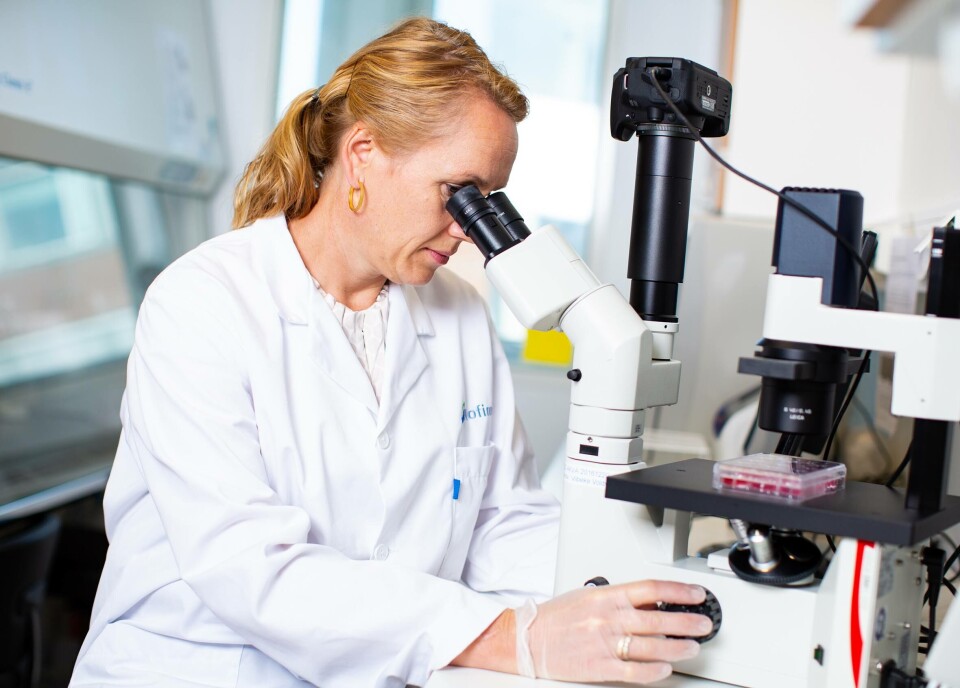
Cutting the lice problem with ‘genetic scissors’
An international effort to discover if the resistance that Pacific salmon have to sea lice can be gene edited into Atlantic salmon has begun.
Research has shown that several species of Pacific salmon are unattractive as hosts for sea lice and the project seeks to uncover the genetic basis for these differences and to see if this knowledge can be used in a way that helps prevent sea lice infestation among farmed Atlantic salmon.
The project is led by Norwegian research institute Nofima and involves scientists from the UK, Australia, Canada, United States, and Sweden.

Could transform industry
“It is no exaggeration that the knowledge we create in this new project could transform the Norwegian aquaculture industry if Atlantic salmon can be made to be highly or completely resistant to lice,” said project leader Nick Robinson, a senior researcher in Nofima.
“If we can reveal the differences in the genetic code that cause lice to be attracted to Atlantic salmon, or that makes the skin of North American salmon a bad place for sea lice to settle and develop, then it may be possible for us to use that information to make Atlantic salmon resistant to sea lice, and have better health.”
Researchers plan to use CRISPR-Cas9 “genetic scissors” to make targeted changes to the Atlantic salmon’s genetic code. For instance, CRISPR-Cas9 could be used to delete a few base sequences of the code to disrupt a gene’s function. But an intense research effort is needed, first to determine which genes could be edited to have the desired effect, and secondly to be able to successfully make the desired edits.

Targeted changes
“CRISPR-Cas9 is still a relatively new technology in the aquaculture research, but can allow for very precise and targeted changes at specific genes in the salmon genome known to be involved in cross-species variation in resistance to lice and the success of its use depends on the type of change that is needed and on the position and code of the gene to be edited,” said Professor Ross Houston of Scotland’s Roslin Institute, whose team will work closely with Nofima on this and other parts of the project.
The researchers will find and measure the chemical components that each salmon species releases. Then they will test how sea lice react to each of the unique chemicals released by Atlantic salmon, and reveal which of them are “semiochemicals” (chemical substances or mixtures released by an organism that affect the behaviours of other individuals) that can attract or repel lice.
Disrupting genes
“We can observe whether lice are excited and stimulated to swim towards these chemicals,” said project partner Howard Browman of the Institute of Marine Research (IMR) in Norway.
They will also undertake experiments to study the response to attached lice by different cell types in the salmon skin, and how this response differs in the resistant Pacific species.
Finally, the researchers will determine what genes are affecting the production of these semiochemicals and affecting the response of different cells in the skin, and test how these genes can be “disrupted” using CRISPR-Cas9 to make Atlantic salmon unattractive to lice.
A long road
But that is only the end of the beginning of a long process.
If the researchers succeed in carrying out gene editing in the laboratory, the salmon must be thoroughly tested up to adult size in closed facilities to investigate how effective the change is and to reveal any potential unwanted side effects. Robinson emphasised that this project will not make genetically edited fish available to industry and that further testing will be needed.
The project will also consider risks of sea lice adapting to the changes in the salmon, and how this would be best prevented.
“Lice adapt to become resistant to chemical treatments, and we need to consider if they might adapt to overcome any specific changes that are made to Atlantic salmon,” said project partner Tim Dempster from the University of Melbourne.
Wild salmon
The project will also consider possible effects on wild salmon populations.
“In the project, we will determine how the changes would be best implemented in a farming population, to make all Norwegian farmed salmon resistant to lice,” said Robinson.
It will be up to the aquaculture industry and the authorities, in consultation with other stakeholders, to determine whether these new tools can be deployed and, if so, the best approaches to their introduction.
The researchers will follow so-called RRI guidelines (responsible research and innovation).
Social consequences
“We will invite NGOs and others who are interested in seafood production to get input on what social and moral consequences the research and possible implementation could have for Norwegian society. With such input, we can adjust the work under way and create a responsible plan that balances animal welfare, ethics and law,” said Robinson.
The project in funded by the Norwegian Seafood Research Fund (FHF) and led by the Nofima. It will involve close collaboration with the University of Edinburgh’s Roslin Institute, Stirling University’s Institute of Aquaculture, Rothamsted Research in England, the University of Melbourne, the University of Prince Edward Island (Canada), Bigelow Laboratory for Ocean Sciences (USA), University of Gothenburg (Sweden), and the IMR (Norway). Salmon ova supplier Benchmark Genetics and major Norwegian salmon farmer SalMar, which co-owns Scottish Sea Farms, are industry partners.























































